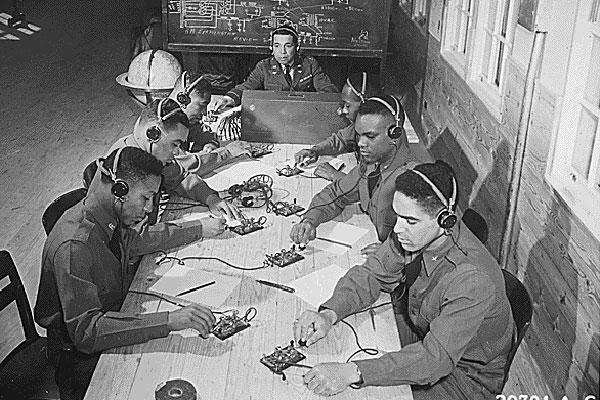What Is Morse Code?
Morse code, the language of the telegraph, is a system of communication that's composed of combinations of short and long tones that represent the letters of the alphabet. The tones are sometimes called dots and dashes, or dahs and dits.
The primitive technology was a precursor to the telephone, radio, microwave, and even to microwave ovens, computers and space satellites.
Skilled operators, called telegraphers, could transmit Morse code messages faster than regular typists in some cases -- up to 84 words per minute, although about 30-35 words per minute was the average.
Much like older-model cars are often simpler to maintain, Morse code is considered a much more reliable communication method than more modern means since its signals need much less broadcasting power than voice messages.
SOS Morse Code
The best-known Morse code message is the S.O.S. cry for help.
It's made up of three short sounds for the letter "S" bookending three longer sounds for the letter "O," often with a pause between each letter. This pattern was chosen simply because it was easy to remember.
It's visually represented by this sequence:
. . . _ _ _ . . .
The SOS radio distress signal and the general procedures for transmitting radio telegrams were established in 1906, six years before the sinking of the Titanic. That doomed liner sent distress calls before foundering, but these calls were tragically ignored due to a series of mishaps and mistakes.
The Coast Guard stopped monitoring SOS signals in 1995, and in 1999, the SOS system was formally replaced by a newer technology, the satellite-based Global Maritime Distress Satellite System (GMDSS).
When Was Morse Code Invented?
Who invented Morse code? The idea for this cheap and reliable mode of communication was dreamed up by an American artist in the 1830s, Samuel Finley Breese Morse, who felt frustrated by his lack of communication options during a month-long sea voyage. During that trip in 1832, "he first began to sketch out ideas for an electric telegraph," according to the Library of Congress.
Morse, who was also a politician and photographer, had little to no knowledge of science, so it took him more than a decade to perfect his idea. He sent the first telegraphic message on May 24, 1844.
Soon after the development of Morse code came the invention of radio-telegraph equipment, which allowed the code to be transmitted over radio waves instead of just over wires.
Morse Code Alphabet
This Morse code chart shows the series of dots and dashes that make up each letter of the alphabet.
| A . _ | N _ . |
| B _ . . . | O _ _ _ |
| C _ . _ . | P . _ _ . |
| D _ . . | Q _ _ . _ |
| E . | R . _ . |
| F . . _ . | S . . . |
| G _ _ . | T _ |
| H . . . . | U . . _ |
| I . . | V . . . _ |
| J . _ _ _ | W . _ _ |
| K _ . _ | X _ . . _ |
| L . _ . . | Y _ . _ _ |
| M _ _ | Z _ _ . . |
Morse Code Numbers
| 1 . _ _ _ _ | 6 _ . . . . |
| 2 . . _ _ _ | 7 _ _ . . . |
| 3 . . . _ _ | 8 _ _ _ . . |
| 4 . . . . _ | 9 _ _ _ _ . |
| 5 . . . . . | 0 _ _ _ _ _ |
When Was Morse Code Used?
In October 1861, Western Union completed the first transcontinental telegraph line, thereby dooming the Pony Express. Morse code was the main language of Western Union for decades, until a new technology -- the teleprinter -- replaced the telegraph system in the 1920s.
Even after Western Union abandoned the system, railroads and oil companies continued to use Morse code for several years.
By the 1960s, Morse code was starting to be considered nearly obsolete. Very few people were interested in learning it unless they had a specialized interest, such as operating ham radios.
Yet the usefulness of Morse code persisted even after it began to be seen as an antiquated technology.
After the 1985 Mexico City earthquake, for example, Morse code allowed amateur radio operators to transmit calls for international help.
In modern times, Morse code continued to be in extensive use in the military and in certain civilian and commercial enterprises, even after it began to die in the era of Teletype, computer and voice transmissions.
Even after it began to be considered old-fashioned, it was used regularly over international airwaves, aboard ships and in other electronic communication systems, even sophisticated ones.
As mentioned above, Morse code continued to be the international standard for long-range maritime communication until 1999. That was the year Morse code was formally replaced by satellite technology.
Morse Code Use in Wars and Conflicts
The Crimean War in the 1850s was the first war in which the military used Morse code.
A few years later during the Civil War, troops relied heavily on Morse code on both the Union and Confederate sides. President Abraham Lincoln personally used Morse code not only so he could stay up to date on military operations, but also to send urgent commands to his generals who were out in the battlefields.
By World War I, Morse code training by the U.S. military was highly standardized. Harvard University's campus, for example, hosted a Morse code operator boot camp of sorts from 1917-19 for the U.S. Naval Radio School. The school moved to Michigan after the war.
During World War II, in addition to its own operators, the U.S. military recruited Native tribes to serve as code talkers using Morse code and other communication methods to send messages. During WWII, Nazi radio networks used to transmit secret signals, which the FBI caught on to.
Service members, even if they were captured by the enemy, used Morse code to communicate clandestinely. The most dramatic example came in the 1960s when U.S. Navy Comdr. Jeremiah A. Denton Jr. was shot down and captured in North Vietnam. Months into his imprisonment, he blinked the word "T-O-R-T-U-R-E" in Morse code during a TV interview that his captors permitted.
Read More: Military History
Is Morse Code Still Used by the Military?
Although Morse code remains relevant today, beginning in 2004, the Department of Defense changed its official stance on Morse code and declared that operators no longer needed to be trained only in this communication technology.
During the past few years, military branches have been phasing out or de-emphasizing Morse code usage and training. The Army, for example, phased out the teaching of Morse code from 2012-2015. In 2015, Morse training was transferred to the 316th Training Squadron at Goodfellow Air Force Base, Texas.
But the U.S. Navy and Coast Guard continue to use signal lamps to communicate by Morse code.
Morse is among the tools that Navy cryptologic technicians use as part of the service's Information Warfare (IW) function to collect, analyze and report on communication signals.
Who Uses Morse Code Today?
Morse code use may have faded, but the language is still around. It remains popular among amateur radio enthusiasts. However, as of 2007, proficiency in the code is no longer required by the Federal Communications Commission to obtain an amateur radio license.
Morse code is still relevant in aviation and aeronautical fields as well. For example, radio navigational aids -- such as Very High Frequency (VHF) Omni-Directional Range (VOR) -- still identify in it. For people with certain physical disabilities, whose ability to communicate is limited, Morse code is often useful as an alternative form of communication.
Want to Learn More About Military Life?
Whether you're thinking of joining the military, looking for post-military careers or keeping up with military life and benefits, Military.com has you covered. Subscribe to Military.com to have military news, updates and resources delivered directly to your inbox.















